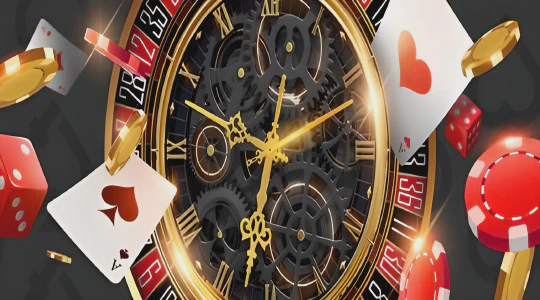How Do Poker Tournaments Work?
Introduction
Poker is a game of skill, strategy, and luck that has gained immense popularity over the years. One of the most exciting aspects of poker is the tournament. Poker tournaments are events where players compete against each other to win a prize pool. These tournaments are organized in casinos and online poker sites all over the world.
In this blog post, we'll take a closer look at the mechanics of poker tournaments. We'll discuss the buy-in, blind structure, tournament format, and some tips for playing in a poker tournament.
The Buy-In
To enter a poker tournament, you need to pay a buy-in fee. This fee is used to create the prize pool for the tournament. The buy-in fee varies from tournament to tournament and can range from a few dollars to thousands of dollars. Typically, the buy-in fee is higher for larger tournaments with bigger prize pools.
Some tournaments may also charge an additional fee called the "rake." The rake is a small percentage of the buy-in fee that is taken by the casino or online poker site hosting the tournament. The rake is used to cover the costs of running the tournament, such as dealer salaries and table rentals.
The Blind Structure
Once all the players have paid their buy-in fee, the tournament can begin. The first thing that happens is the blind structure is established. The blinds are forced bets that the two players to the left of the dealer must make before each hand. The player immediately to the left of the dealer must make a small blind bet, and the player to their left must make a big blind bet Mostbet.
The size of the blinds increases as the tournament progresses, forcing players to play more hands and make more aggressive bets. This is because the blinds represent a cost to each player, and as they increase, players need to win more chips to stay in the game.
The Tournament Format
Tournaments can be played in several formats, but the most common is the "freezeout" format. In a freezeout, players are eliminated from the tournament when they run out of chips. As players are eliminated, the remaining players are moved to new tables to balance the number of players at each table. This process continues until only one player remains, and they are declared the winner of the tournament.
Other tournament formats include rebuy tournaments, where players can buy more chips if they run out, and satellite tournaments, where players can win a seat in a larger tournament by winning a smaller one.
Tips for Playing in a Poker Tournament
Here are some tips for playing in a poker tournament:
| # | Tip |
| 1 | Manage your bankroll wisely. Determine how much you're willing to spend on the buy-in and stick to it. |
| 2 | Be patient. Don't get impatient and start making reckless decisions. Wait for the right opportunities to come your way. |
| 3 | Stay focused on your game plan. Stick to your strategy and don't deviate from it, even if other players are making different moves. |
| 4 | Pay attention to the blind levels. As the blinds increase, you need to adjust your strategy accordingly. You may need to become more aggressive to stay in the game. |
Frequently Asked Questions
What is a poker tournament?
A poker tournament is an event where players compete against each other to win a prize pool. Tournaments can be held in casinos or on online poker sites, and players must pay a buy-in fee to enter.
How does the buy-in work?
The buy-in fee is used to create the prize pool for the tournament. The fee varies from tournament to tournament and can range from a few dollars to thousands of dollars. Typically, the buy-in fee is higher for larger tournaments with bigger prize pools. Some tournaments may also charge an additional fee called the "rake." The rake is a small percentage of the buy-in fee that is taken by the casino or online poker site hosting the tournament.
What is the blind structure?
The blind structure is the system used to determine the size of the blinds, which are forced bets that the two players to the left of the dealer must make before each hand. The size of the blinds increases as the tournament progresses, forcing players to play more hands and make more aggressive bets.
What is the tournament format?
The most common tournament format is the "freezeout" format, where players are eliminated from the tournament when they run out of chips. The remaining players are moved to new tables to balance the number of players at each table. This process continues until only one player remains, and they are declared the winner of the tournament. Other tournament formats include rebuy tournaments, where players can buy more chips if they run out, and satellite tournaments, where players can win a seat in a larger tournament by winning a smaller one.
What are some tips for playing in a poker tournament?
Some tips for playing in a poker tournament include managing your bankroll wisely, being patient, staying focused on your game plan, and paying attention to the blind levels. As the blinds increase, you may need to become more aggressive to stay in the game.


